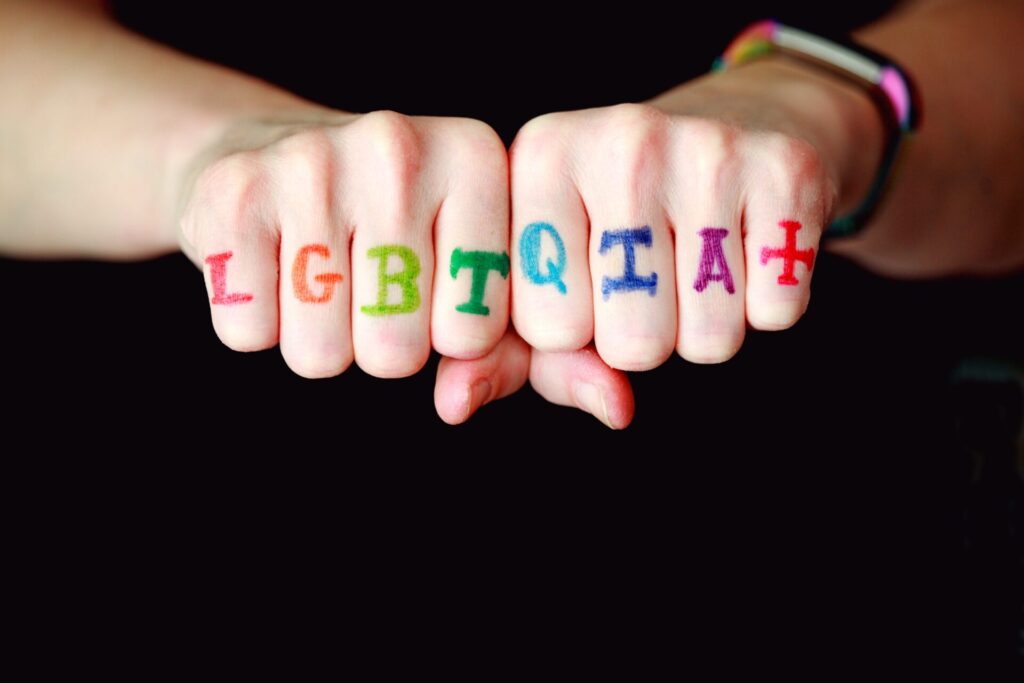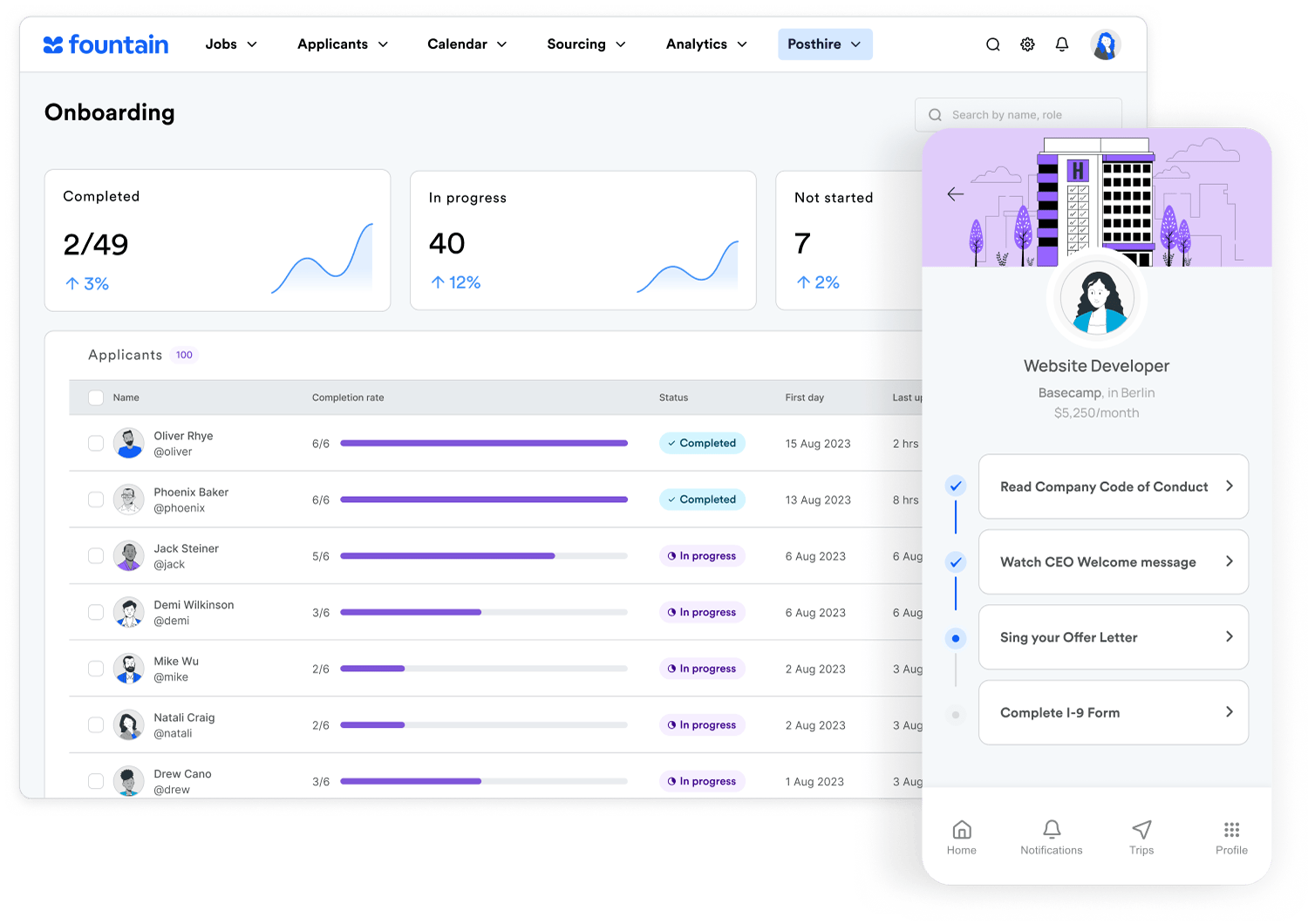Insight, advice, and tips on creating a supportive workplace
In the ever-evolving workplace, four powerful words hold the key to progress and success: diversity, equity, inclusion, and belonging (DEIB). These principles must guide current workplace practices and recruiting efforts for any company that seeks to create a more equitable future.
We want to recognize and celebrate the contributions made by the LGBTQIA+ community, who play an integral role in many sectors, including in the hourly workforce. As we celebrate Pride Month, we reflect on the immense value the LGBTQIA+ community brings to society and the impact they have had and continue to have on the economy as a whole.
Allyship and education are key components of an inclusive workplace, one that creates space for open dialogue and learning. By promoting awareness and acceptance, we can build a work environment where everyone feels seen, heard, and, most importantly, valued.
Although significant strides have been made during the last few decades in terms of fair hiring practices and workplace support systems, there are lingering systemic biases that are hindering further progress for LGBTQIA+ workers. Discriminatory hiring practices, harassment and exclusion in the workplace, and pay disparity persist and put these workers at a disadvantage when it comes to excelling in their careers.
Allyship and education are key components of an inclusive workplace, one that creates space for open dialogue and learning.
Did you know that a staggering 36% of LGBTQIA+ workers have reported experiencing discrimination on the job?1 Discrimination can transcend the entire employee experience, from being passed over for a role or promotion or being excluded from company events.
What’s more, workers who identify as part of the LGBTQIA+ community earn about 90 cents for every dollar earned by workers who aren’t part of this community, and LGBTQIA+ people of color, transgender women and men, and non-binary individuals earn even less. As a result of this pay gap, 23% of LGBTQIA+ workers and 35% of people who identify as transgender lived in poverty in 2020, compared with 16% of people who did not identify as LGBTQIA+ or transgender.
But in light of these barriers, organizations have the power to turn the page toward a brighter future, one where workers of all gender identities, gender expression, and sexual identities and orientations are given the same opportunities to succeed. Diversity without action is just a buzzword. Inclusion and belonging are cornerstones of a thriving, innovative, and harmonious workplace.
Together, we can build a future where LGBTQIA+ workers are celebrated, supported, and encouraged to be their authentic selves while reaching their potential.
In this article, we’ll explore how managers and leaders alike can cultivate systems that support the individuals within the LGBTQIA+ community to ensure applicants and workers feel accepted, respected, and included.
Building an LGBTQIA+ support system in the workplace
Building an LGBTQIA+ support system is an ongoing process. It takes commitment, time, resources, and action. There is no singular solution when it comes to what strategies, programs, policies, measures, and practices will or won’t work for any one particular company.
This calls on us to be open to input and hold ourselves accountable for ensuring we are intentionally listening to our employees and pursuing multiple avenues for gathering feedback, understanding needs, and keeping a pulse on employee experiences.
Here are four recommendations to consider:
- Leaders can take proactive steps by backing and supporting educational opportunities that engage employees at all levels with training and dialogues focused on concepts, history, and issues concerning the LGBTQIA+ community. It’s imperative for leaders not to expect members of the LGBTQIA+ community to educate others, but it’s important to include LGBTQIA+ voices in decision-making conversations. This can strengthen connections between employees and leadership while building trust and understanding.
- Review your application and onboarding materials and process to ensure that you are being as inclusive as you can be.
Raina Nelson, Senior Manager of the Workplace Equality Program at the Human Rights Campaign (HRC), recommends offering the option for applicants and new hires to provide both legal and chosen names, as well as personal pronouns.
An additional inclusion effort to consider is to allow candidates and employees to write their own “sex” or “gender” on job applications and employee paperwork rather than choosing one from a predetermined list.
- Take a look at your employee handbook. Add or amplify sections that outline nondiscrimination policies. If an employee encounters discrimination in the workplace, make the reporting process transparent. There’s an abundance of tools available that can be used to provide comfortable and anonymous avenues for employees to voice concerns, ask questions, and share feedback like AllVoices, which Fountain uses.
Additionally, be explicit about zero tolerance for any form of discrimination against fellow employees.
- Offer support services that address workers’ needs, regardless of their gender identity, gender expression, and sexual identities and orientations. Such services might include accessible and inclusive healthcare benefits, implementing workplace training programs, and supporting employee resource groups (ERGs) specifically focused on LGBTQIA+ affinity and support.
For example, there are two actions we’ve taken here at Fountain. First, all employees have access to Carrot fertility benefits, which help LGBTQIA+ individuals start their unique family-forming journeys. Second, Fountain launched Pride at Fountain, an affinity group that provides a support network and safe space for LGBTQIA+ Fountaineers and enhances professional and personal growth through empowerment and community, while fostering a culture of acceptance, inclusion, equity, compassion, and respect.

Zach Harrell, Director of Diversity and Inclusion Programs at Madison Square Garden (MSG) and advisor to the ERGs, describes ERGs as safe spaces for like-minded individuals across a company to “build community and support, advance a company’s commitment to diversity and inclusion, and support local communities. Additionally, ERGs can be a great way for companies to help advance efforts in attracting, developing, and retaining diverse talent.”
“The Pride ERG at MSG, which is made up of LGBTQIA+ employees and allies, is a pivotal part of our broader work being done around diversity and inclusion,” Harrell said. “Our ERGs have created opportunities for employees across our various venues and family of companies to come together and network and connect.”
When asked what advice he has for employees who are interested in starting their own ERGs at their workplace, Harrell emphasized the importance of defining the role of the ERG and its members: “Many times, ERG leaders are volunteering on top of their job. Therefore, it’s crucial to plan for what you’re trying to accomplish and what may be the responsibility of a defined department within the organization.
“There isn’t a one-size-fits-all approach to ERG programming, and sometimes it’s about trying new things out and offering variety. We have employees in multiple time zones and we have employees who work all hours of the day. Our ERGs are encouraged to offer variety in their programming—whether that means different location options, different times of the day, and a combination of virtual and in-person programming.
“It’s also important for any ERG to get the support of your leadership, and finding an executive sponsor (whether they’re part of the community or an ally) will help an ERG move forward with its annual goals.”
LGBTQIA+ considerations for the hourly workplace
There are additional considerations companies should consider that are more applicable in the hourly workplace. Let’s explore.
- Host educational speakers and/or organize social gatherings where teams can interact and connect around LGBTQIA+ topics and other shared interests. This not only fosters education but also creates a space for connection and networking.
“Our ERG leaders have been engaged with broader conversations with our D&I team on creating new training opportunities for employees and have worked to support various panels and speakers,” Harrell said, alluding to the initiatives of the Pride ERG at MSG. “Last month, they partnered with our Benefits team to host an LGBTQIA+-focused benefits workshop for employees to help them understand their resources and options.”
- Encourage workers to participate in volunteer activities that benefit the LGBTQIA+ community by collaborating with a local organization or partnering with established organizations such as The Trevor Project, Transgender Law Center, or the ACLU.
- Keep hourly workers informed and engaged as they may not have a company-designated email address (which many of us likely take for granted). Additionally, some hourly jobs may not have a central location where workers can congregate or take breaks together (e.g., long-haul truck drivers). Consider building mailing lists using their personal email addresses so they can receive updates on events, special programs, and other important information.
- For hourly workers who have access to computers and mobile devices, leverage online communication platforms like Slack, WhatsApp, or GroupMe to create virtual communities. These spaces can serve as “break rooms” or bulletin boards, allowing workers to connect and stay engaged whenever it’s convenient for them.
We hope these ideas fuel ongoing conversations for you, your team, and your company. Seek out opportunities to hear and learn from others; the exchange of best practices and ideas benefits all of us as we advance this important work. Together, we can create a workplace that not only champions fair hiring practices but also celebrates the diverse talents and contributions of LGBTQIA+ individuals.
To learn more about Fountain, click here.
Additional resources
- Trans Toolkit for Employers—The HRC’s “Transgender Inclusion in the Workplace: A Toolkit for Employers” provides HR and DEI professionals with an overview of legal and other issues, such as access to inclusive healthcare and barriers to employment, surrounding transgender inclusion, while outlining current best practices from leading U.S. companies today.
- A Workplace Divided—Part of the HRC’s ongoing series on LGBTQIA+ experiences in the workplace. Every five years, the HRC conducts climate research on LGBTQIA+ and non-LGBTQ+ workers to gain insight into experiences, perceptions, and impacts.
- Resources for Allies: Being an Ally guide—The HRC’s landing page for ally resources and our “Being an Ally” guide. These resources offer guidance to allies on LGTBQIA+ history, LGBTQIA+ identity, what to do when someone comes out to you, and more.
- Future Proofing the Workplace—This HRC report presents the facts about LGBTQIA+ and ally demographics of Gen Z and Millennial workers. It also provides guidance for what employers can do to attract, welcome, and retain these workers.
- What are personal pronouns and why do we use them?

